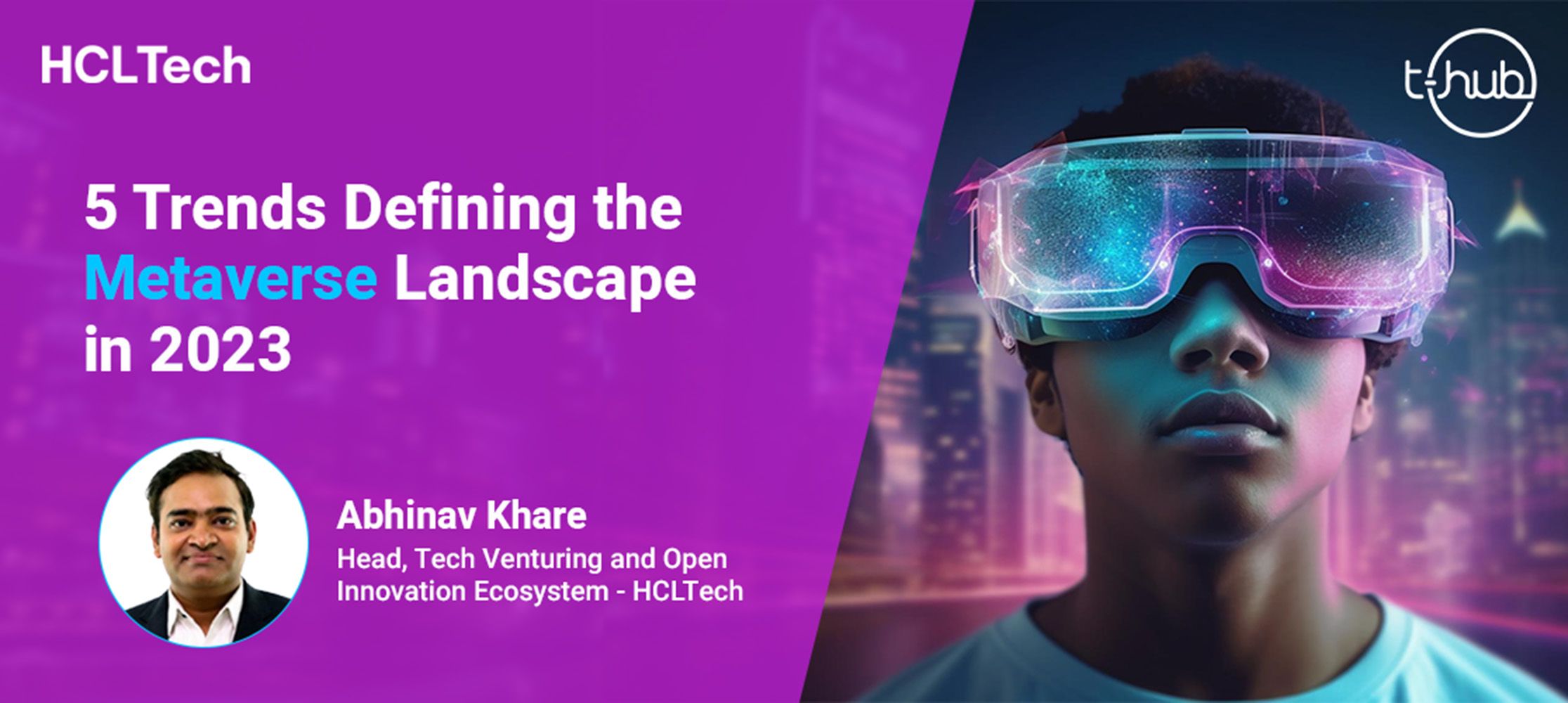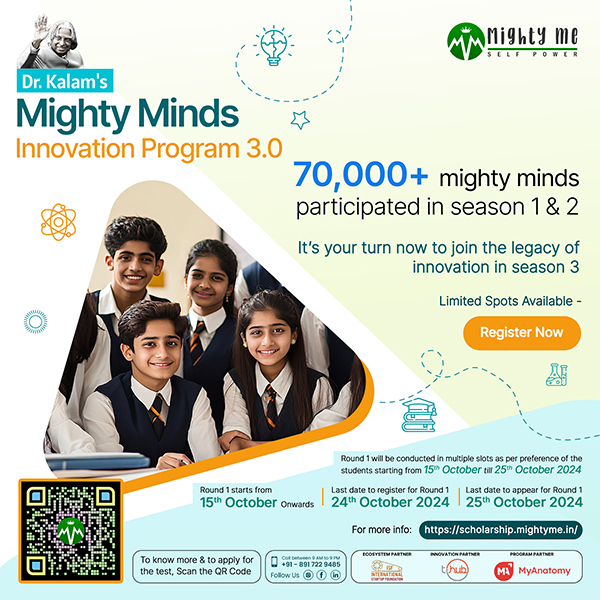Picture a vast digital realm where billions of individuals reside, conduct business, shop, learn and interact with one another, all while being in the comfort of their homes in the physical world. This is the metaverse.
In the innovation ecosystem, the virtual world has the computer screens we currently use to access a vast information network. This information has transformed into gateways to a tangible 3D universe that is larger and more advanced than real life. Our digital counterparts or avatars, move from one experience to the next. This brings our personal identities and financial assets into the 3D universe.
In the metaverse an emerging concept becomes a reality and captures the imagination of technologists, futurists and enthusiasts alike.
The potential applications of the metaverse are vast, especially in the startup ecosystem, with implications for industries such as –
- Gaming
- Entertainment
- Education
- Healthcare
- Social and economic systems.
The metaverse represents a new frontier in digital innovation and has the potential to transform the way we live, work and interact with each other.
In this blog, we’ll look closely at five trends defining the industry metaverse in 2023.
Digital Twins: The Entry Point to Industrial Metaverse

Digital twins in the metaverse are virtual representations of physical assets, products or systems that simulate the behaviour and performance of their physical counterparts.
Digital twins have become the entry point to the industrial metaverse, providing a virtual environment for Human-Environment-Machine integration.
With digital twins, operators can simulate operations and test changes before implementing them in the physical world.
For example, the digital twin of a wind turbine helps get repairs done remotely without needing a technician to visit the turbine.
This allows for faster and more efficient decision-making, reducing downtime, improving overall performance and enabling enterprises to enhance their customer experience to drive better business outcomes.
Shifting Focus Toward Enterprise Use Cases

The industrial metaverse is an exciting development in the manufacturing and industrial sectors. It’s a virtual innovation ecosystem where engineers, designers and other professionals can collaborate on projects. Not just that, they can simulate manufacturing processes and test equipment in a safe and controlled environment using virtual simulations and augmented reality (AR) technologies.
The shift to enterprise use cases for the industrial metaverse is driven by several factors – the key to the increasing complexity of modern manufacturing. With more advanced technologies and processes being developed, it’s becoming more challenging to design and manufacture products without the help of virtual simulations.
For example, safety is paramount in industries like aerospace or nuclear power. Testing and validating the performance of safety-critical systems solely through physical experimentation can be risky and impractical. Virtual simulations enable engineers to create realistic scenarios, analyse system behaviour and identify potential safety hazards or failure modes without endangering personnel or equipment.
Another factor is the increasing need for individual collaboration or incubator collaboration between geographically dispersed teams. The industrial metaverse allows engineers and designers to collaborate in a virtual environment.
It is facilitated by:
- Shared virtual spaces
- Avatars
- Real-time communication
- Co-authoring capabilities
- Virtual prototyping
- Knowledge sharing
- Integration with various engineering and design tools
This helps reduce the time it takes to develop and manufacture new products.
Finally, there is a growing recognition of the potential benefits of the industrial metaverse for enterprise use cases. These include:
- Product design and development
- Supply chain management
- Training and skills development
- Virtual factory planning
- Customer engagement
- Visualisation
The benefits are expansive – including improved efficiency, reduced costs and improved safety, all of which are essential for businesses looking to remain competitive in today’s fast-paced marketplace.
Increased Investments Towards Infrastructure Creation

The establishment of the enterprise metaverse depends on both hardware devices and infrastructure. Hardware devices are necessary for employees to access and interact with the virtual world, while infrastructure is necessary for the virtual world to be fast, reliable and secure.
The virtual world enables employees to collaborate and complete work tasks more efficiently and productively, regardless of location. This has the potential to reduce commuting time and space requirements while increasing employee flexibility and work-life balance.
Companies are investing in developing better hardware devices, such as VR headsets and AR glasses, to make the enterprise metaverse more accessible. The goal is to create hardware devices that provide ease of use, cost efficiencies and seamless experience for employees in the virtual world.
As more companies invest in the enterprise metaverse, there will be an increased demand for faster and more reliable connectivity. 5G networks will provide the necessary infrastructure for this demand, enabling employees to access the virtual world seamlessly, anywhere.
Enterprises will increasingly invest in augmenting data centres to provide the necessary infrastructure to ensure that the virtual world remains fast and reliable.
Here’s a peek at recent exciting developments:
- Microsoft has developed ‘Mesh’, a platform to enable users to collaborate in virtual reality (VR) and augmented reality (AR). Microsoft has also partnered with Meta to bring its productivity apps to Meta Quest headsets.
- Qualcomm is investing in developing AR and VR headsets and its underlying technology that powers these devices. The company has also recently partnered with Microsoft to develop AR experiences for the enterprise.
- Nvidia is developing its Omniverse platform that allows users to create and collaborate on 3D projects in VR and AR.
High-quality 3D Metaverse Models Powered by 5G and Edge Computing

Recently, there has been a significant shift toward enabling excellent, immersive and engaging customer experiences in the innovation ecosystem. High-quality 3D models, with their attention to detail, are ideal for showcasing products and services in an interactive and engaging way.
Imagine you’re shopping for a luxury sports car, and this is how your experience unfolds:
- You’re treated to a photorealistic 3D model of the car that captures the intricate design elements, textures and materials of the car.
- The 3D model includes accurately modelled body panels, realistic lighting effects and a highly detailed interior.
- You’re able to rotate, zoom in and explore the car from a variety of angles, open doors and play with the convertible top.
- The 3D model is also designed to integrate into a VR or AR experience, allowing you to “step inside” the car.
This level of visualisation can be particularly effective for industries like automotive, interior design, architecture and fashion, where visual appeal and attention to detail are crucial factors in the purchasing decision.
While a high-quality 3D model implies a certain level of realism, the high poly model specifically refers to a model with many polygons. High poly models are typically more detailed and have smoother surfaces but require more computational power to render and can be resource-intensive.
This is where 5G and edge computing can work together to address the challenge. While 5G provides ultra-fast speeds and low latency connections, edge computing brings computing power closer to the end-user, reducing the time it takes to process data.
Accelerating Metaverse with Low-code and No-code Platforms
No-code and low-code development platforms are emerging as game-changers in developing XR and metaverse applications in today’s startup ecosystem.
They provide a simpler alternative to traditional code-based development, reducing the barriers to entry for developers and enabling faster and more cost-effective application development. As technology advances, we expect to see even more innovative use cases for no-code and low-code development platforms in the XR and metaverse space.
A Peek at Real-World Applications of Metaverse
The metaverse has the potential to revolutionise various industries in the innovation ecosystem. Mainly by allowing for faster and more efficient product development while simultaneously reducing costs.
Here’s a glimpse at industry leaders that have materialised this potential in striking ways:
- Siemens is using the industrial metaverse to create digital twins of its factories. This is helping the company to improve efficiency, productivity and safety.
- Bosch uses the industrial metaverse to train its employees on new products and technologies. This is helping the company to reduce training costs and improve employee safety.
- Rolls-Royce is using the industrial metaverse to design and test new aircraft engines. This is helping the company to reduce the time and cost of bringing new products to market.
These are just a few examples of the many companies exploring the potential of the industrial metaverse.
The Future of Metaverse
The concept of the metaverse has evolved from a fictional idea to reality.
- Imagine engineers and designers working seamlessly across geographical boundaries, visualising and iterating upon their creations in a shared virtual space.
- Picture technicians troubleshoot complex machinery with augmented reality overlays, reducing downtime and improving efficiency.
- Imagine customers exploring and customising products in a virtual showroom, experiencing them firsthand before making a purchase.
The industrial metaverse can potentially transform how we work, communicate and experience products and services. It will enable businesses to transcend physical limitations, ultimately unlocking new dimensions of innovation and engagement.






